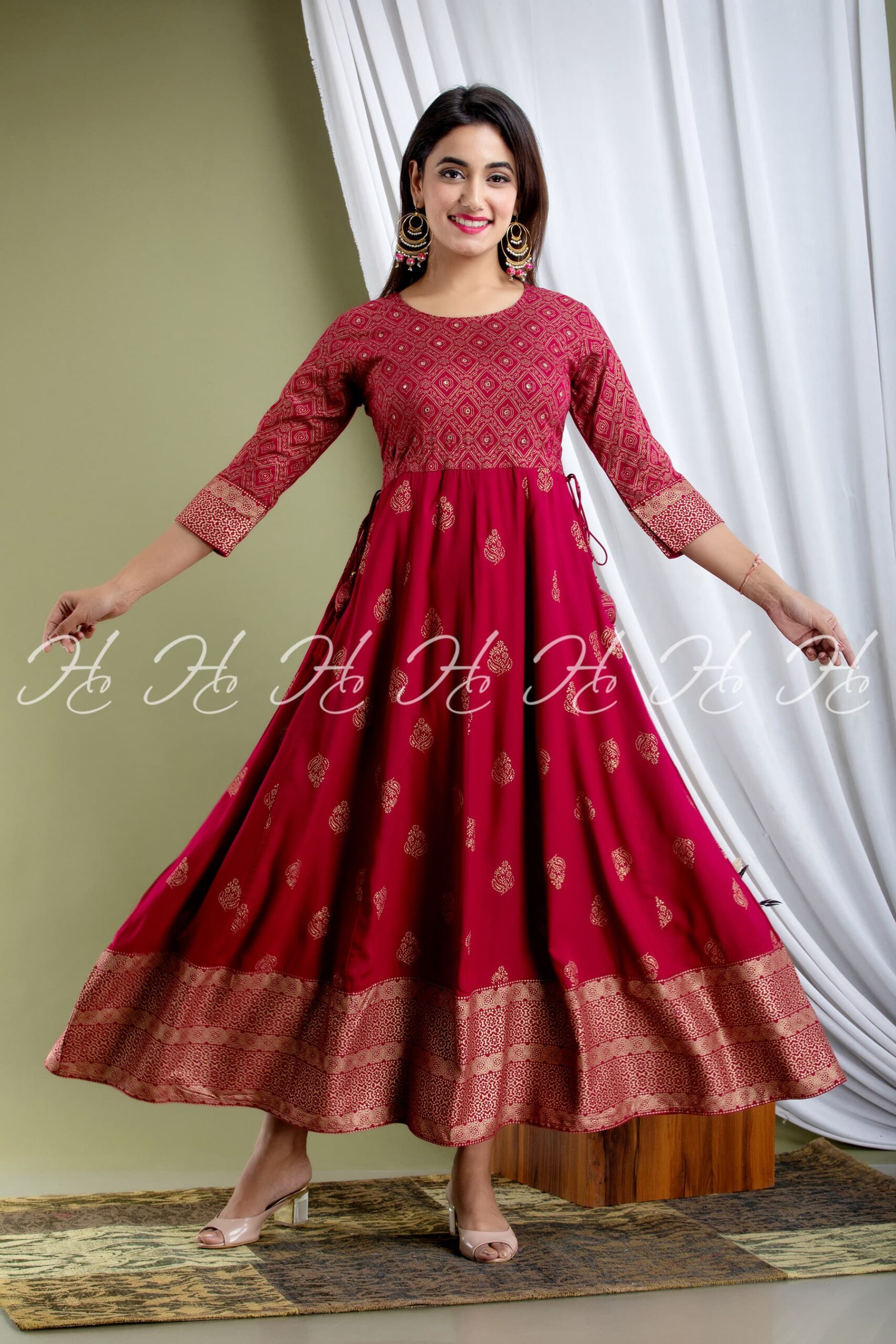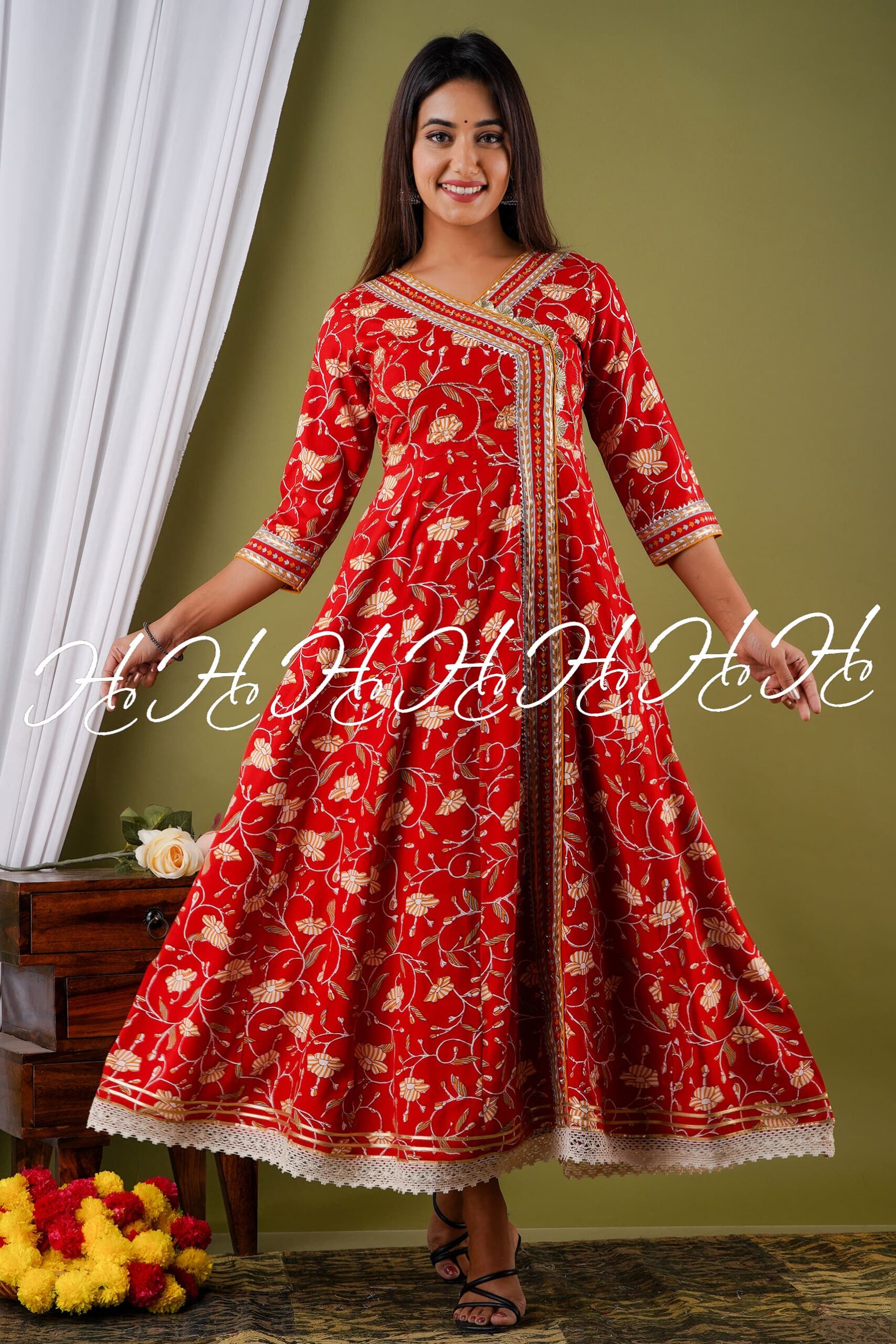
When it comes to the fashion and apparel industry in India, understanding pricing strategies is crucial for businesses, boutiques, and retailers. For those looking to stock kurtis in bulk, knowing how wholesale prices are determined can significantly impact their purchasing decisions. But how do kurti manufacturers set their wholesale prices? Let’s explore the factors and processes that influence pricing in the Indian kurti market.
Understanding Production Costs
The first step in setting wholesale prices involves a clear understanding of production costs. Kurti manufacturers in India start by calculating the cost of raw materials, including fabrics such as cotton, silk, georgette, or chiffon. These costs fluctuate depending on fabric quality, seasonal availability, and sourcing location. Manufacturers also factor in embellishments, embroidery, sequins, buttons, and other decorative elements that add to the overall material cost.
Labor is another essential component. Skilled artisans, tailors, and embroidery workers require fair compensation for their expertise. Labor costs can vary widely based on location, skill level, and production complexity. For instance, a kurti featuring intricate hand embroidery will naturally cost more to produce than a simple printed kurti.
Kurti manufacturers near me often emphasize that accurately assessing material and labor costs ensures they do not underprice products, protecting both profit margins and business sustainability.
Considering Operational Expenses
Beyond production, operational costs play a major role in wholesale pricing. These expenses include rent for manufacturing units, electricity, water, machinery maintenance, and other overheads. Many kurti manufacturers in India operate on tight margins, so incorporating operational costs into pricing is crucial to remain profitable.
Transportation and logistics are also included, particularly for manufacturers supplying across regions. Bulk shipments incur packaging and shipping costs, which affect the final wholesale price. Manufacturers must consider these expenses to ensure their products reach buyers without cutting into profits.
Market Research and Competitor Analysis
Kurti manufacturers do not operate in isolation. Before finalizing wholesale prices, they conduct extensive market research. Understanding competitor pricing helps them remain competitive while maintaining quality. If a kurti manufacturer charges significantly more than others in the same category, retailers may look elsewhere. Conversely, pricing too low may affect perceived quality and brand reputation.
Manufacturers often analyze both local and national trends. Those searching for “kurti manufacturers near me” may notice slight price variations based on regional demand, fabric availability, and local consumer preferences. By keeping a pulse on market trends, manufacturers can strategically set prices to attract bulk buyers without compromising margins.
Quality and Design Factors
Quality and design play a decisive role in wholesale pricing. Kurtis made from high-quality fabrics, featuring intricate handwork, or designed by renowned in-house designers are priced higher. Manufacturers emphasize that buyers are willing to pay more for exceptional craftsmanship.
Kurti manufacturers in India differentiate their products through unique patterns, modern cuts, or fusion styles that blend traditional and contemporary fashion. Such designs allow manufacturers to set premium prices for wholesale orders. Additionally, seasonal collections often command higher rates due to limited availability and current fashion trends.
Economies of Scale
Large-scale production allows manufacturers to reduce per-unit costs, enabling competitive pricing for wholesale buyers. When kurtis are produced in bulk, manufacturers can negotiate better rates for fabric and materials, optimize labor allocation, and streamline production processes. These savings are often reflected in wholesale pricing, benefiting retailers who purchase in large quantities.
Smaller manufacturers may not achieve the same cost efficiencies, so their prices might be slightly higher. Therefore, boutiques and retailers looking for the best deals often compare multiple “kurti manufacturers near me” to identify those offering the ideal balance of quality and cost.
Demand and Seasonal Considerations
Demand fluctuations significantly influence wholesale pricing. Manufacturers track market demand closely to adjust their pricing strategy. For example, kurtis in high demand during festive seasons, weddings, or regional festivals are priced higher due to the limited supply and increased consumer interest.
Some kurti manufacturers in India also offer discounts or incentives for bulk orders during off-peak seasons, helping retailers stock inventory at lower costs. Understanding seasonal trends allows manufacturers to manage stock efficiently while ensuring fair wholesale prices.
Profit Margin and Business Strategy
Ultimately, wholesale pricing is driven by profit margin targets. Manufacturers set prices to cover costs while achieving sustainable profits. Profit margins vary depending on brand positioning, market reach, and customer base. Luxury or designer kurti manufacturers may charge higher margins, whereas mass-market suppliers focus on volume and affordability.
By maintaining transparent and consistent pricing, kurti manufacturers build trust with retailers, encouraging long-term partnerships. Those searching for “kurti manufacturers near me” often value manufacturers who offer both competitive pricing and reliable product quality.
Negotiation and Flexibility
Many manufacturers leave room for negotiation, especially with long-term clients or large-volume orders. Flexible pricing strategies, such as tiered discounts for bulk purchases, incentivize retailers to buy more while fostering lasting relationships.
Manufacturers emphasize that building rapport with buyers is as important as pricing. Personalized service, timely delivery, and quality assurance can justify slightly higher prices and strengthen client loyalty.
Conclusion
Setting wholesale prices for kurtis involves a careful balance of production costs, operational expenses, market research, quality considerations, and business strategy. Kurti manufacturers in India meticulously calculate these factors to offer fair and competitive prices to retailers and boutiques.
FURTHER READING...
Can Beginners Use Tattoo Needle Cartridges?
September 27, 2025
What Makes Braided Wigs a Popular Choice for Stylish Looks?
September 27, 2025
How can I partner with kurti manufacturers for retail or online sales?
September 26, 2025
What qualifications should I look for in a general contractor?
September 22, 2025
What Are Dental Implants for One Missing Tooth?
September 19, 2025
How can online marketplaces connect me with trustworthy kurti manufacturers?
September 19, 2025
What Types Of Businesses Need A Commercial Locksmith?
September 17, 2025
Why Is IT Recycling Essential for the Environment?
September 13, 2025
Latest - post
Category
- 1win-oyna (1)
- 1win-uz-kirish.org (1)
- 1x (1)
- 1xbet (1)
- 1xbet Casino AZ (8)
- 1xbet Korea (1)
- 1xbet russian (9)
- 1xbet russian1 (1)
- 1xbet-india-online.in3 (1)
- 1xbet-kirish.com (1)
- 22bet Österreich (1)
- adonnasbakery.net (1)
- akss.uz (1)
- americanfoodshop.it (1)
- answer (1)
- answers (2)
- appleoffortune.net (1)
- ateliermasomi.com (1)
- aviamasters-games.net (1)
- aviatorbet.co.uk (1)
- bchsfoundation.org (1)
- bdmbetitalia.com (1)
- bdmbetportugal.com (1)
- betonred-australia.net (1)
- betonred-cz.org (1)
- betonreddeutschland.com (1)
- betonredespana.net (1)
- betonredfrance.com (1)
- betonreditaly.net (1)
- betonredpl.win (1)
- betonredportugal.net (1)
- bigbassbonanza.cc (1)
- bigbasssplash.cc (1)
- bigbasssplash.com.es (1)
- bigbeverage.net (1)
- billionairespincz.com (1)
- billionairespinespana.com (1)
- bizzo.at (1)
- blog (119)
- bookhippo.uk (1)
- Business (12)
- candy-spinz-casino.com.de (1)
- candyspinz.us (1)
- candyspinzespana.com (1)
- cascbar.co.uk (1)
- casino (2)
- casino en ligne argent reel (1)
- casino en ligne fr (10)
- casino zonder crucks netherlands (10)
- casinoinfinityespana.com (1)
- casinonicaustralia.net (1)
- chicken-road-game.org.uk (1)
- chicken-road-it.org (1)
- chicken-road-online.net (1)
- chicken-road2.co.uk (1)
- chicken-road2.in (1)
- chicken-road2.us (1)
- chickencross-es.com (1)
- chickencrossavis.com (1)
- chickencrossgame.co.uk (1)
- chickenroadavis.net (1)
- chickenroadespana.com (1)
- chickenroadgame.cc (1)
- ciispecialabilityjobs.in (1)
- clovermagic.us (1)
- clovermagiccasino.us (1)
- cresus-casino.us (1)
- czdrops25monobrands (1)
- drivein.hr (1)
- emmeessentials.co (1)
- Environment (10)
- eyeofhorus.cc (1)
- funkyaardvark.co.uk (1)
- garden2table (1)
- gatesofolympusslot.cc (1)
- godsgypsy.com (1)
- gopbeavercounty.org (1)
- Home (728)
- hrcarers.org.uk (1)
- hudsunmedia.com (1)
- imvest.it (2)
- itreadynetwork.org (1)
- ivibetcasino.us (1)
- ivibetkasyno.net (1)
- jamesbrausch.com (1)
- jonbet.br.com (1)
- kycoroners.com (1)
- lalabetnederland.net (1)
- legacyofdeaddemo.com.de (1)
- locandadelcolonnello.it (1)
- Marketing (11)
- marniegrundman.com (1)
- Medical (11)
- megajokernetent.com (1)
- megajokerslot.net (1)
- Monobrand (15)
- mostbet ozbekistonda (1)
- mostbet-azerbaycan-giris (1)
- mostbet-oyna (1)
- News (3)
- nextstageco.com (1)
- ocbombers.com (1)
- oddboy.nz (1)
- olympecasino.us (1)
- olympecasinofrance.net (1)
- oscarspin.us (1)
- oscarspinespana.com (1)
- oscarspinportugal.com (1)
- PariMatch India (1)
- Pirots SE (1)
- playojo.games (1)
- playregalfrance.net (1)
- playuzu.games (1)
- plinko (12)
- plinko-official.com (2)
- plinkogamecasino.net (1)
- plinkogamedownload.in (1)
- plinkorecensioni.org (1)
- Post (16)
- prava-osi.hr (1)
- ragingrhino.org (1)
- Relationship (10)
- reviewer (35)
- ricordiamocidellinfanzia.it (1)
- ripper-casino.us (1)
- rippercasinoespana.com (1)
- rjlprecisioneng.co.uk (1)
- roll-x-game.net (1)
- rollx-game.org (1)
- Roobet Official Website in India (1)
- rubyfortune.world (1)
- Sober living (1)
- space-interiors.it (1)
- spingranny.us (1)
- spingrannyportugal.com (1)
- spinmama-de.com.de (1)
- spinmama-pt.com (1)
- spinmamaespana.com (1)
- spinmamafrance.net (1)
- spinmamaitaly.net (1)
- stockx.co.nz (1)
- superacedemo.net (1)
- sweet-bonanza-germany.com (1)
- sweetbonanzaslot.us (1)
- tedxmarseille.com (1)
- tfsvl.co.uk (1)
- timclarkband.com (1)
- tuopreventivatore.it (2)
- twiceastranger.net (1)
- twincasino-sv.com (1)
- twincasino.us (1)
- uniquecasinoespana.net (1)
- vegasino-ie.com (1)
- Vegastars Casino Australia (1)
- very-well-casino.org.uk (1)
- wbcommunitytrust.co.uk (1)
- wbcommunitytrust.co.uk2 (1)
- Wettigo Suisse – agenceapocope.com (1)
- wildrobincasino-de.com (1)
- wildrobinfrance.com (1)
- win-unique-casino.org (1)
- winvegasplus.org (1)
- yayas.uk (1)
- сателлиты (2)
- сеточный домен (1)
- 카지노사이트 – onlifezone.com (1)













